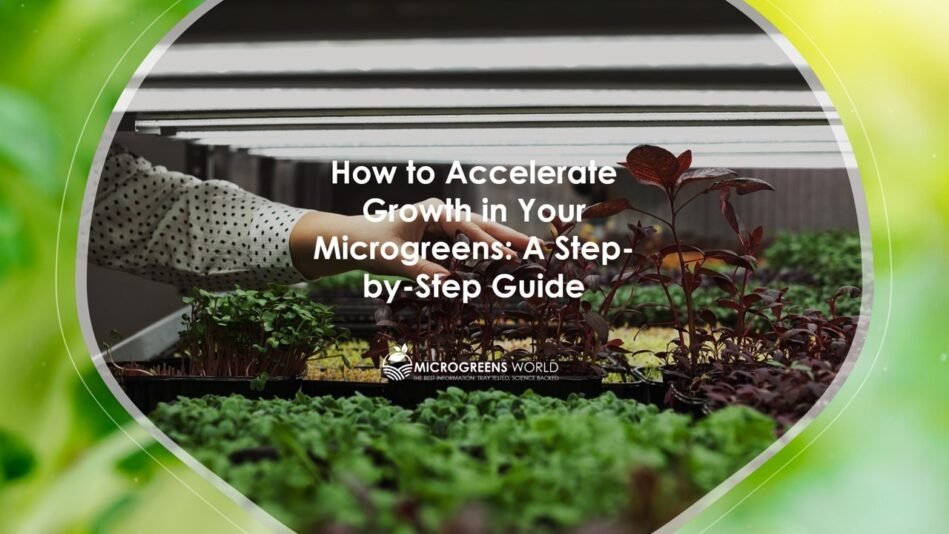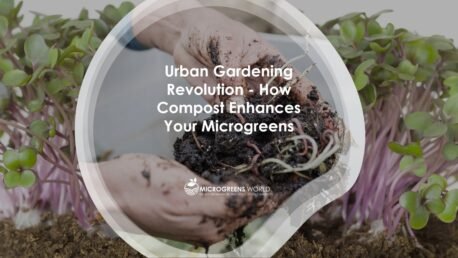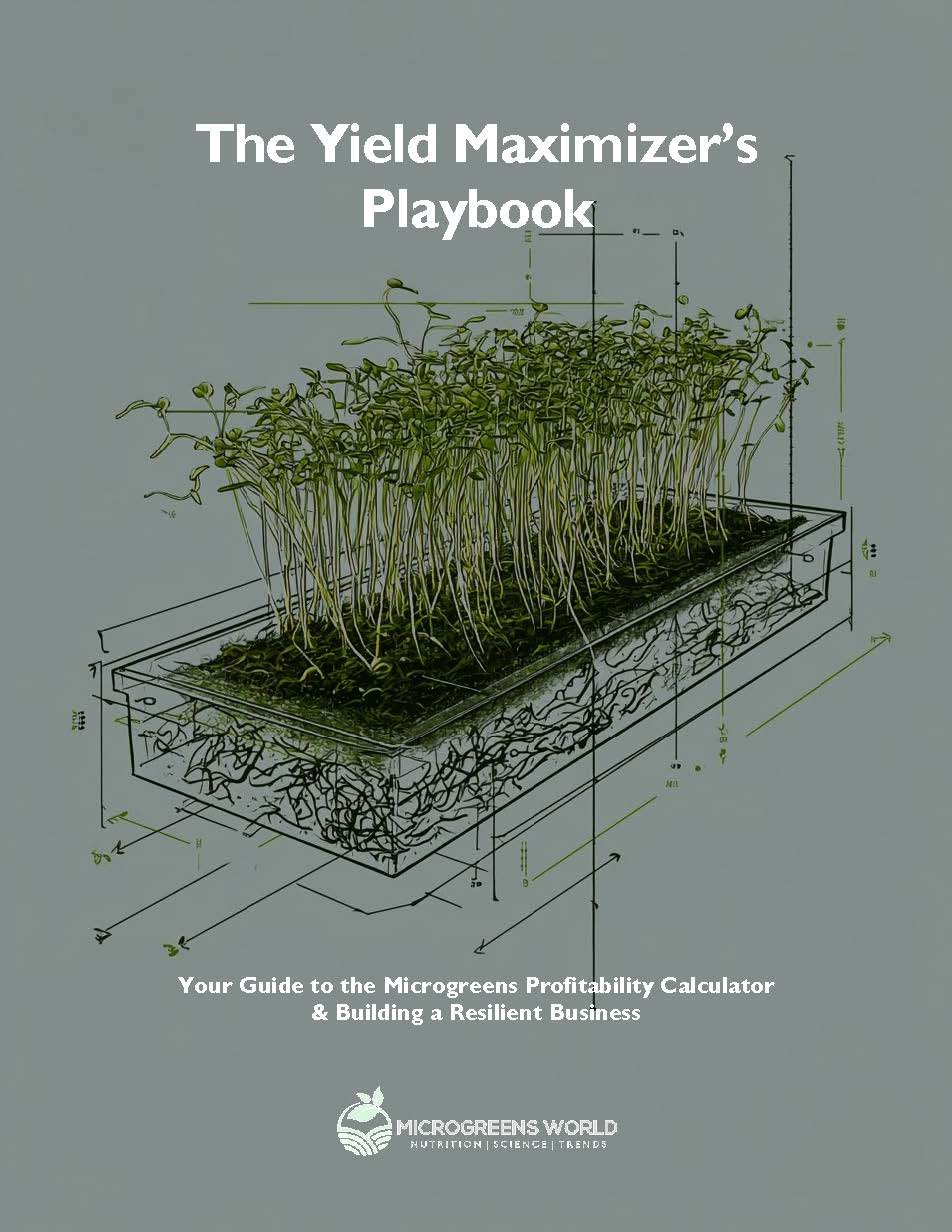Have you ever compared two microgreens harvests and wondered how to accelerate growth in your microgreens?
Urban dwellers, backyard gardeners, sustainability advocates, and entrepreneurs increasingly use microgreens, the young green shoots of vegetables and herbs. Their high nutritional content and the ease of growing them indoors make them an excellent choice for those seeking to incorporate more greens into their diet or start a small-scale farming business.
However, one common challenge many growers face is the slow growth of microgreens.
Slow growth in microgreens can be addressed by optimizing the type of seeds, growing medium, and growing conditions, including light, temperature, and nutrient supply. Regular monitoring and adjustments can ensure healthy, rapid growth.
This post will delve into the causes of this issue and provide practical solutions to overcome it. You can speed up the growth of your microgreens and reap their benefits more quickly if you have the right skills and techniques.
Are you interested in learning more? Keep reading to discover the science behind microgreen growth and practical tips to speed up the process.
INTERESTED IN MICROGREENS?
Join the community
Join more than 50,000 other health-conscious individuals and couples who visit our site and receive weekly emails from us to help them grow more microgreens to live healthier and longer lives.
Understanding Microgreen Growth
Microgreens are the early growth stages of plants, harvested just after the first true leaves have developed. They are grown from various seeds, including vegetables, herbs, and grains. Several factors can influence the growth rate of microgreens, including the type of seed, growing medium, light, temperature, and nutrient availability.
Light is critical for photosynthesis, the process by which plants use sunlight to provide their growth with organic energy. The intensity, duration, and quality of light can significantly impact the growth rate of microgreens. Similarly, temperature affects the metabolic rates of plants. Optimal temperatures can vary depending on the type of microgreen, but generally, a range between 65-75°F (18-24°C) is suitable for most varieties.
Nutrients are another critical factor. Microgreens, like all plants, require essential nutrients for growth. The plants absorb these nutrients from the growing medium, which you can supplement. Insufficient nutrient supply can result in slow growth and poor plant health. [2]
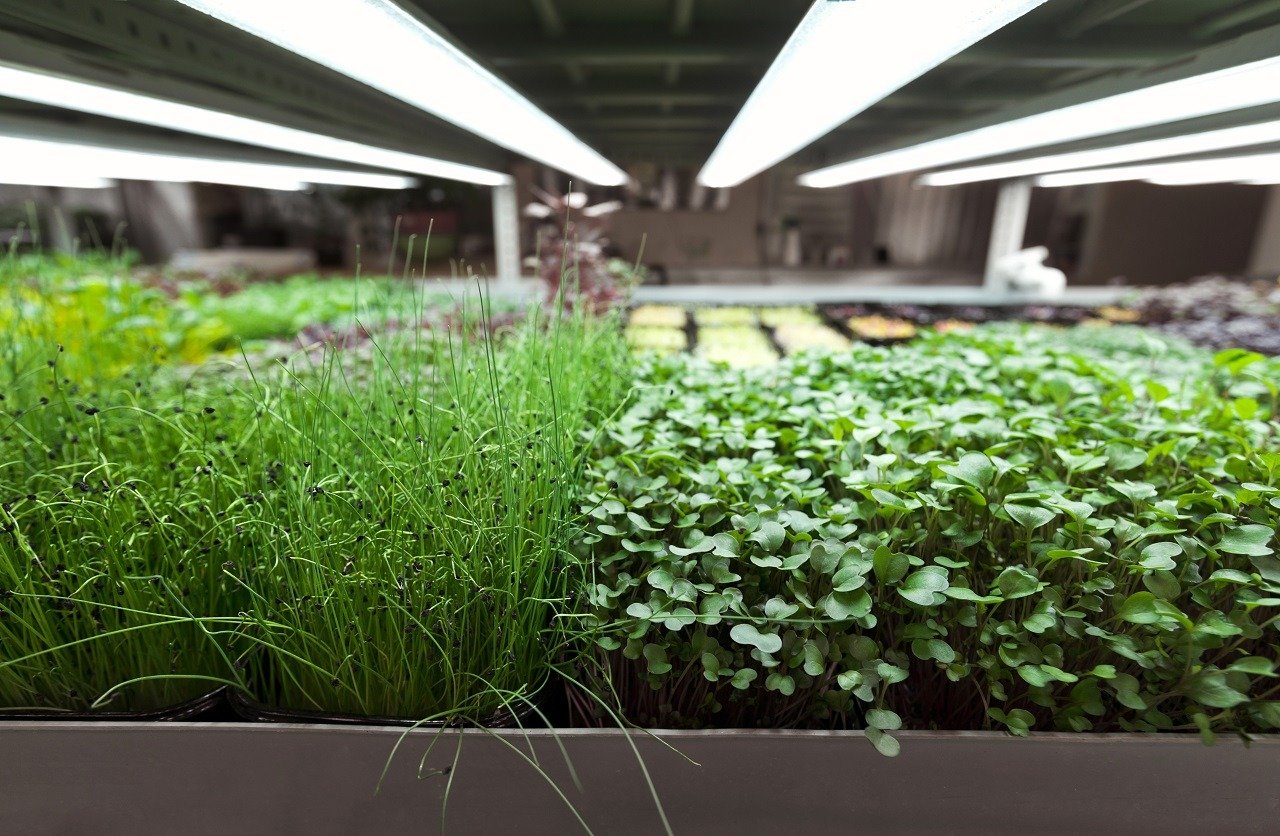
Strategies to Accelerate Microgreen Growth
Optimize Light Conditions
Light plays a pivotal role in plant growth. A balance of light intensity, duration, and quality is essential for microgreens. Most microgreens require high light intensity for optimal growth. However, too much light can lead to stress and damage. Therefore, it’s crucial to monitor your plants and adjust the light conditions as needed.
Light duration, or photoperiod, also affects growth. While microgreens can tolerate a wide range of photoperiods, providing 12-16 hours of light per day is a general rule of thumb.
Light quality, determined by the spectrum of light provided, can influence plant growth. Blue light promotes leafy growth, while red light encourages stem elongation and flowering. For microgreens, a balance of blue and red light is ideal.
Regulate Temperature
Temperature regulation is another critical aspect of microgreen cultivation. While these plants can tolerate various temperatures, optimal growth typically occurs between 65-75°F (18-24°C). Too high or low temperatures can slow growth and cause stress. Therefore, maintaining a consistent, optimal temperature is vital.
Provide Essential Nutrients
Microgreens require a range of nutrients for healthy growth, including macronutrients like nitrogen, phosphorus, and potassium and micronutrients like iron, zinc, and copper. While these nutrients are often present in the growing medium, additional supplementation may be necessary.
Di Gioia et al. (2019) found that applying a nutrient solution designed explicitly for microgreens could significantly enhance their growth and yield.[1]
Monitor and Adjust
Regular monitoring and adjustment of growing conditions are crucial for optimal microgreen growth. Monitoring includes checking the light conditions, temperature, and moisture levels and making necessary adjustments. Regularly inspecting your plants can help you spot any potential issues early and take corrective action. Explore more automated growing methods in my post “Harnessing Technology for a Greener Future: A Guide for Microgreens Entrepreneurs.”
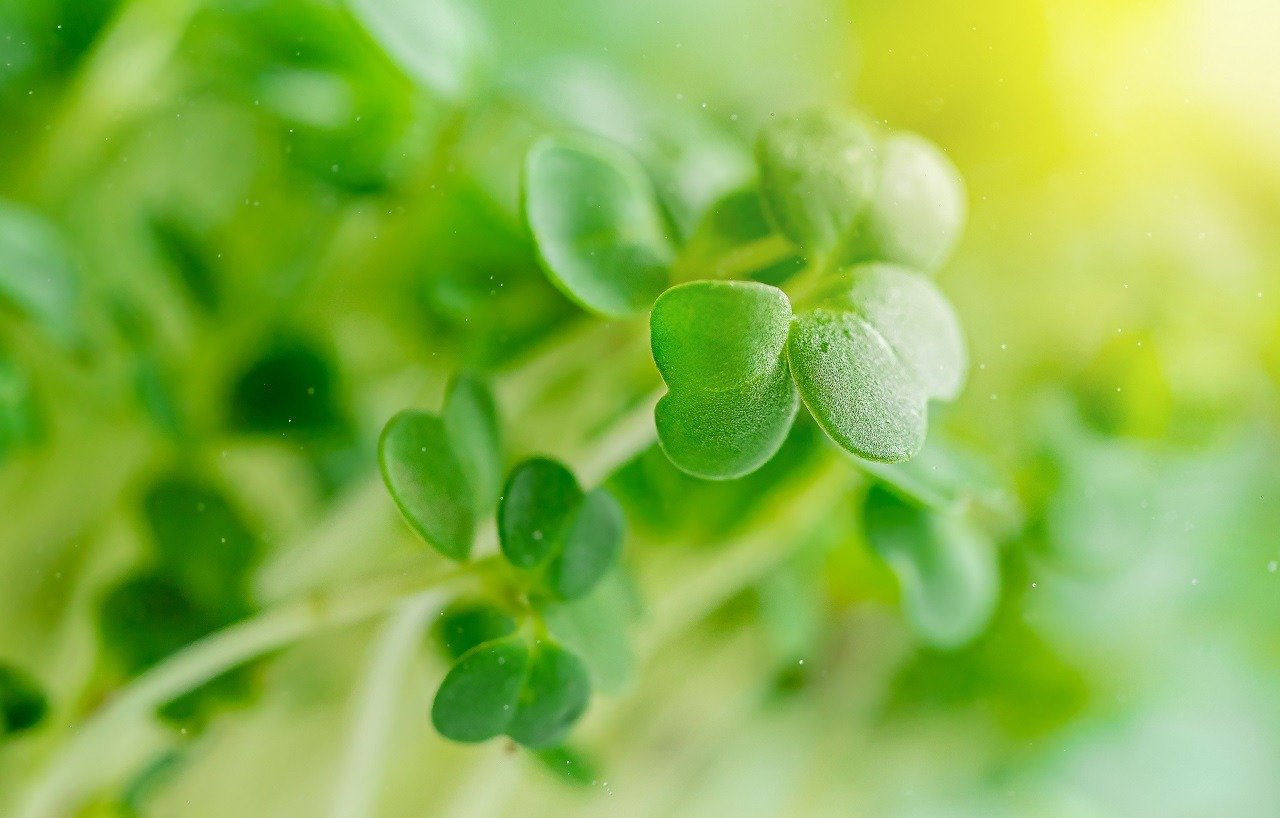
Practical Application: Boosting Your Microgreens’ Growth
Now that we’ve discussed the science behind microgreen growth and the factors that can affect it, let’s look at some practical steps you can take to deal with slow growth in your microgreens.
- Choose the Right Growing Medium: The growing medium plays a significant role in the growth of your microgreens. It should be rich in nutrients and retain good water while providing adequate drainage. Some popular choices include coconut coir, peat moss, and specially formulated microgreen mixes.
- Optimize Light Conditions: Ensure your microgreens get the right light. If you’re growing indoors, consider using a grow light. Remember to adjust the light intensity and duration as needed.
- Maintain Optimal Temperature: Keep your growing area at a consistent, optimal temperature. You can easily control this if you’re growing indoors. Consider using a greenhouse or shade cloth for outdoor growing to protect your plants from extreme temperatures.
- Provide Essential Nutrients: Regularly apply a nutrient solution to your microgreens. You can find pre-mixed solutions designed for microgreens or make your own by combining a balanced fertilizer with water.
- Monitor and Adjust: Regularly check your plants and growing conditions. Make necessary adjustments to ensure your microgreens grow in the best possible environment.
By following these steps, you can effectively deal with slow growth in your microgreens and enjoy a bountiful harvest.
Takeaways: Empowering Your Microgreen Growth
Slow growth in microgreens can be a challenge. But with the proper knowledge and techniques, it’s a problem that you can effectively address. You can create optimal plant growth conditions by understanding the factors influencing microgreen growth, such as light, temperature, and nutrients.
Remember, regular monitoring and adjustment is the key to accelerating microgreen growth. By closely monitoring your plants and their environment, you can spot potential issues early and take corrective action. Whether you’re an urban dweller growing microgreens in your apartment, a home gardener seeking to add more greens to your meals, a sustainability advocate promoting local food production, or an entrepreneur running a small-scale farming business, these insights and strategies can help you optimize your microgreen growth and yield. [3]
So, don’t let slow growth deter you. Embrace the challenge, apply these strategies, and watch your microgreens thrive. Happy growing!
INTERESTED IN MICROGREENS?
Join the community
Join more than 50,000 other health-conscious individuals and couples who visit our site and receive weekly emails from us to help them grow more microgreens to live healthier and longer lives.
Related Questions
Can I grow microgreens without any artificial light?
While microgreens can grow under natural light, insufficient light can lead to slow growth. If you’re growing indoors and don’t have access to ample natural light, consider using a grow light.
How often should I water my microgreens?
Microgreens generally need to be watered once a day. However, this may differ depending on your cultivated area’s humidity and temperature. It’s essential to keep the growing medium moist but not waterlogged. Overwatering can lead to problems like mold and root rot. Explore more in my post “Growing Microgreens at Home in Containers.”
Can I reuse the soil after harvesting my microgreens?
While it’s possible to reuse the soil, it’s generally not recommended as it can spread diseases. If you reuse your soil, sterilize it first to kill potential pathogens. After harvesting your microgreens, remove the roots and leftover plant material, then sterilize the soil by baking it in the oven before using it again. Explore more sustainability practices in my post “Driving Sustainability: The Role of Quality Control in Your Microgreens Business.”
Join the Microgreen Revolution
Ready to tackle slow growth in your microgreens and boost your harvest? Start today! Apply the strategies discussed in this article and see the difference they can make. And remember, growing microgreens is not just about the end product. It’s about learning, experimenting, and connecting with nature. So, embrace the process, enjoy the experience, and share your microgreen journey with others. Leave a comment below, share your tips and experiences, or ask any questions. Let’s grow together in this microgreen revolution!
For a wealth of knowledge, read the post “The Beginner’s Nutritional Guide to Incredible Microgreens” to explore more about microgreens.
And to learn how to grow microgreens, read this post “Beyond the Windowsill: Growing Microgreens on Your Balcony or Patio.“
References
- Di Gioia, Francesco, et al. “Sprouts, Microgreens and “Baby Leaf” Vegetables.” Food Engineering Series, 2017, pp. 403–432, https://doi.org/10.1007/978-1-4939-7018-6_11.
- Xiao, Z., Lester, G. E., Luo, Y., & Wang, Q. (2012). Assessment of Vitamin and Carotenoid Concentrations of Emerging Food Products: Edible Microgreens. Journal of Agricultural and Food Chemistry, 60(31), 7644–7651. https://pubs.acs.org/doi/10.1021/jf300459b
- Kyriacou, Marios C., et al. “Micro-Scale Vegetable Production and the Rise of Microgreens.” Trends in Food Science & Technology, vol. 57, Nov. 2016, pp. 103–115, https://doi.org/10.1016/j.tifs.2016.09.005.
